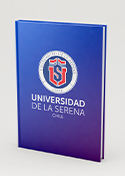Browsing by Author "Besla, G"
Structure, Kinematics, and Observability of the Large Magellanic Cloud's Dynamical Friction Wake in Cold versus Fuzzy Dark Matter
(ASTROPHYSICAL JOURNAL, 2023-09-01) Foote, HR; Besla, G; Mocz, P; Garavito-Camargo, N; [et al.]
The Large Magellanic Cloud (LMC) will induce a dynamical friction (DF) wake on infall to the Milky Way (MW). The MW's stellar halo will respond to the gravity of the LMC and the dark matter (DM) wake, forming a stellar counterpart to the DM wake. This provides a novel opportunity to constrain the properties of the DM particle. We present a suite of high-resolution, windtunnel-style simulations of the LMC's DF wake that compare the structure, kinematics, and stellar tracer response of the DM wake in cold DM (CDM), with and without self-gravity, versus fuzzy DM (FDM) with m a = 10-23 eV. We conclude that the self-gravity of the DM wake cannot be ignored. Its inclusion raises the wake's density by & SIM;10%, and holds the wake together over larger distances (& SIM;50 kpc) than if self-gravity is ignored. The DM wake's mass is comparable to the LMC's infall mass, meaning the DM wake is a significant perturber to the dynamics of MW halo tracers. An FDM wake is more granular in structure and is & SIM;20% dynamically colder than a CDM wake, but with comparable density. The granularity of an FDM wake increases the stars' kinematic response at the percent level compared to CDM, providing a possible avenue of distinguishing a CDM versus FDM wake. This underscores the need for kinematic measurements of stars in the stellar halo at distances of 70-100 kpc.
